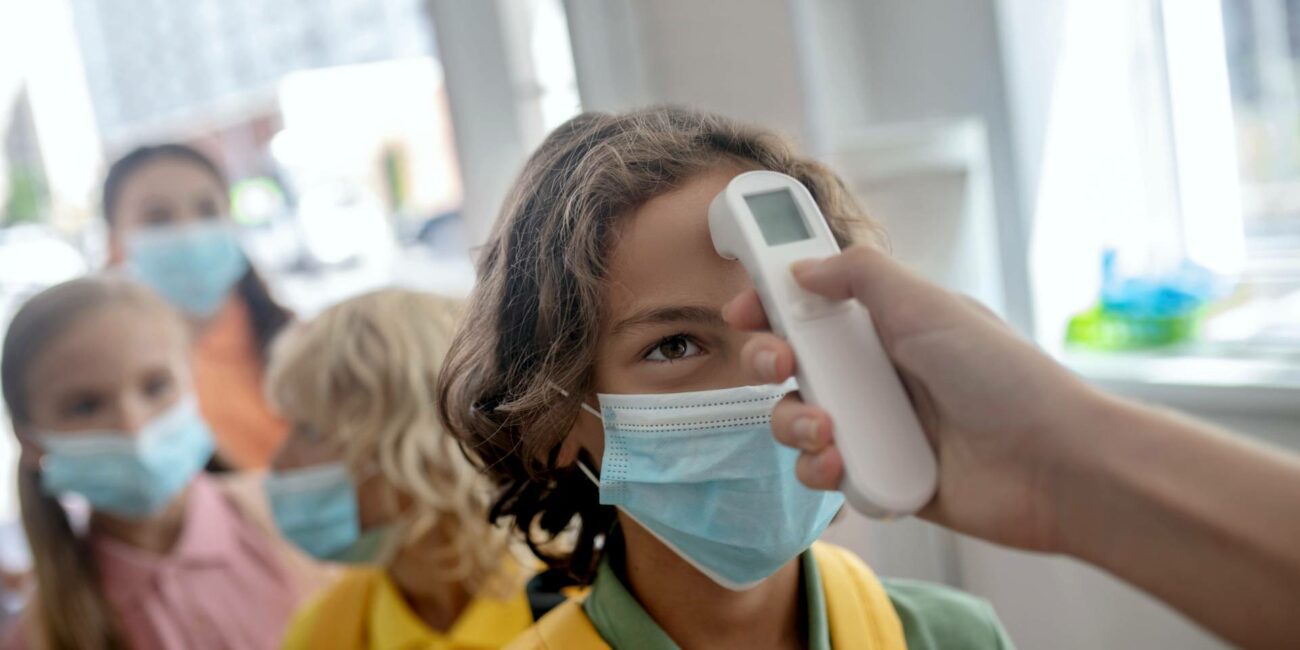Haige kuni terveks tõestamiseni
By Abir Ballan & Helen Tindall
Across the globe, official public health policy during the COVID-19 pandemic has been underpinned by the concern that people without disease symptoms may transmit the virus. This has led to recommendations such as universal mask-wearing, social distancing, mass testing, stay at home orders and school and business closures
“Searching for people who are asymptomatic yet infectious is like searching for needles that appear and reappear transiently in haystacks, particularly when rates are falling.”
The concern that SARS-CoV-2 could be spread by people without symptoms originally came from a single case report. It was alleged that an asymptomatic woman from China had spread the virus to 16 other contacts in Germany. Later reports showed that, at the time of contact, this woman was actually taking medication for flu-like symptoms, invalidating the evidence provided for the theory of asymptomatic transmission.
As with other common respiratory viruses, SARS-CoV-2 spreads by being exhaled, coughed or sneezed into the air (Ref). The largest droplets fall quickly and settle on the ground whilst the most lightweight particles, known as aerosols, may remain suspended in the air for days (Ref). Once the virus is present in the environment, it spreads by finding its way into the respiratory tract of new hosts in a large enough quantity (known as the ‘viral load’ or ‘infectious dose’) to infect them. Fomite transmission (touching contaminated surfaces and then touching the face) is a theory that is not scientifically supported (Ref).
The most significant risk factor for COVID-19 disease is advanced age and the presence of underlying health issues such as cardiovascular disease, obesity and type 2 diabetes (Ref & Ref). Both factors contribute to a frail immune system. In addition to the health status of the exposed person, the environment in which exposure occurs also affects the probability of that person falling ill. Infectious aerosols remain suspended for longer in cold, dry air. Hence respiratory viruses transmit most efficiently during colder seasons (Ref). People spend more time indoors during cold weather, where poor ventilation leads to higher concentrations of infectious aerosols remaining in the air. Spending time in crowded indoor spaces also increases the risk of transmission (Ref, Ref, & Ref). Furthermore, lack of exposure to the sun in colder weather results in lower Vitamin D levels, and greater susceptibility to illness if infected (Ref).
Infection with the SARS-CoV-2 virus causes some individuals to become ill with COVID-19. Many people have had previous exposure to other related coronaviruses. These individuals develop mild or no symptoms following infection with SARS-CoV2, most likely due to protection conferred by this exposure. Cross-immunity has been demonstrated in multiple studies (Ref, Ref, Ref, & Ref). “The evidence that a subset of people has a cross-reactive T cell repertoire through exposure to related coronaviruses is strong.” (Ref).
People presenting with symptoms of COVID-19 are almost exclusively responsible for transmitting SARS-CoV-2. Serious infection usually results from frequent exposure to high doses of SARS-CoV-2, such as health care workers caring for sick COVID-19 patients in hospitals or nursing homes (Ref) and people living in the same household (Ref). ”The risk for transmission of SARS-CoV-2 among close contacts increased with the severity of index [initial] cases.” (Ref). The more serious the individual’s symptoms are the more infectious they are.
A person showing no symptoms of COVID-19 may test positive for SARS-CoV-2 on a PCR test, which doesn’t necessarily mean that they are infectious. There are four ways in which this can happen:
- The test may give a false positive result due to several faults in the testing process or in the test itself (Ref) (the person is not infected);
- The person may have recovered from COVID-19 in the last three months (the person is not currently infected but dead debris of the virus are being picked up by the test);
- The person may be pre-symptomatic, i.e, the person is infected but still in the early stages of the disease and has not yet developed symptoms; or
- The person may be asymptomatic, i.e. the person is infected but has pre-existing immunity (Ref) and will never develop symptoms.
In asymptomatic individuals, the viral load is typically very low and the infectious period is also short in duration. They may still exhale virus particles, which another person may encounter. However, the overall likelihood of transmitting the disease to others is negligible. Thus asymptomatic cases are not the major drivers of epidemics. As Dr Anthony Fauci of the US National Institute of Allergy and Infectious Diseases stated in March 2020:
“In all the history of respiratory-borne viruses of any type, asymptomatic transmission has never been the driver of outbreaks. The driver of outbreaks is always a symptomatic person”.
A study in May 2020 found that all 455 contacts of an asymptomatic individual did not become infected with SARS-CoV-2 and the researchers concluded that “the infectivity of some asymptomatic SARS-CoV-2 carriers might be weak.” (Ref). A recent study shows the minimal effect of asymptomatic transmission within the same household. 1000 asymptomatic and pre-symptomatic individuals lead to 7 new infections, while 1000 symptomatic individuals lead to 180 new infections (Ref). The real impact of asymptomatic transmission is likely to be even smaller than this figure because the study combines asymptomatic and presymptomatic individuals. The risk of asymptomatic spread outdoors would be even more insignificant.
Masks, for example, do not protect anyone from contracting the virus. The size of the SARS-CoV-2 virus is 1/10,000 mm and can easily pass through medical or cloth masks with each inhalation and exhalation. According to a review of the literature published by the Centers for Disease Control and Prevention in the United States, “We did not find evidence that surgical-type face masks are effective in reducing laboratory-confirmed influenza transmission, either when worn by infected persons (source control) or by persons in the general community to reduce their susceptibility” (Ref). Empirical evidence from (otherwise similar) masked vs unmasked states, regions and countries has also failed to demonstrate any beneficial effect (Ref).
A sensible recommendation is to ask sick individuals to stay at home until they are recovered, which may last for about eight days (Ref). This age-old commonsense practice would have saved the world incredible collateral damage. Instead of wasting resources by focusing on the healthy, it’s time to shift our attention to the vulnerable to improve their prognosis and survival. This strategy involves three key components: prevention (Vitamin D supplementation, healthy lifestyle, avoiding crowded indoor places during the peak of outbreaks and safe and efficacious vaccination), early treatment of symptoms in the high-risk group and effective treatment protocols in the event of hospitalisation.
Photo by Linas Drulia on Unsplash

Abir Ballan, MPH
Abir has a background in public health, psychology, and education. She’s been a passionate advocate for the inclusion of students with learning difficulties in schools. She has also published 27 children’s books in Arabic. Abir is particularly concerned for the wellbeing of the young, the elderly and people in the developing world in the midst of the disproportionate COVID-19 response.

Helen has a Masters in Public Health and 20 years experience in public health programme management in Australia and overseas. This includes infectious disease surveillance, outbreak response, tuberculosis control, viral hepatitis and vaccination programs. She specialised in child health programmes and currently volunteers in impoverished communities in Cambodia.




